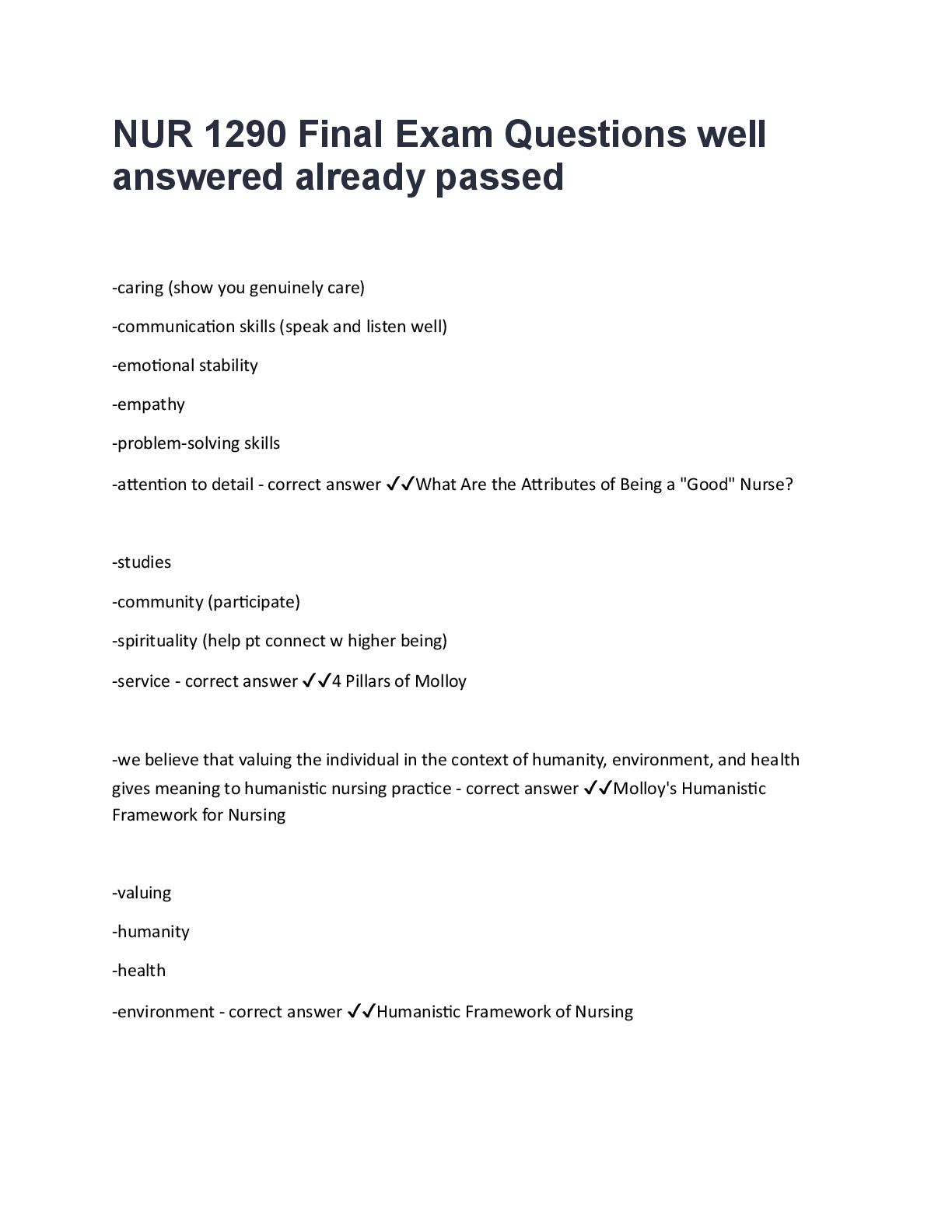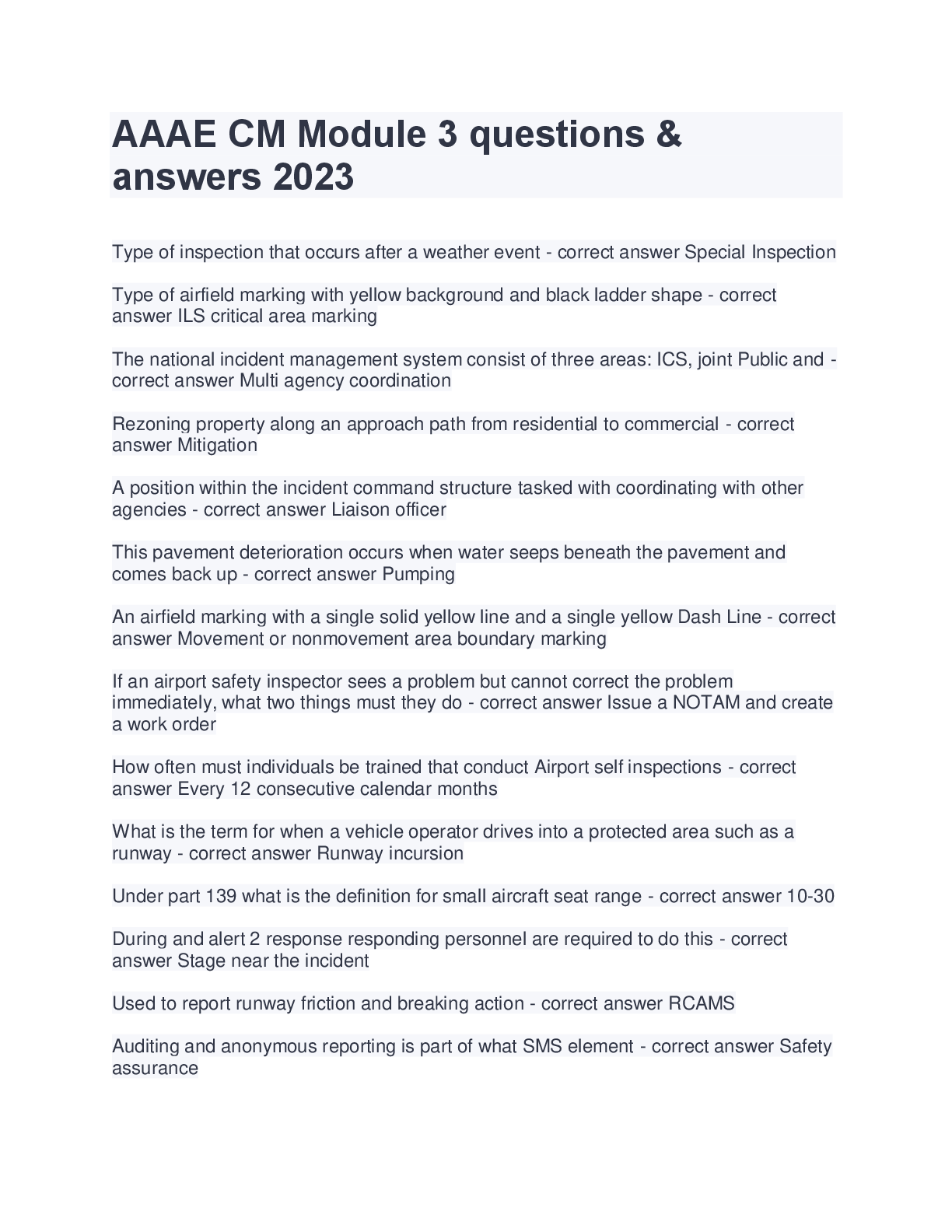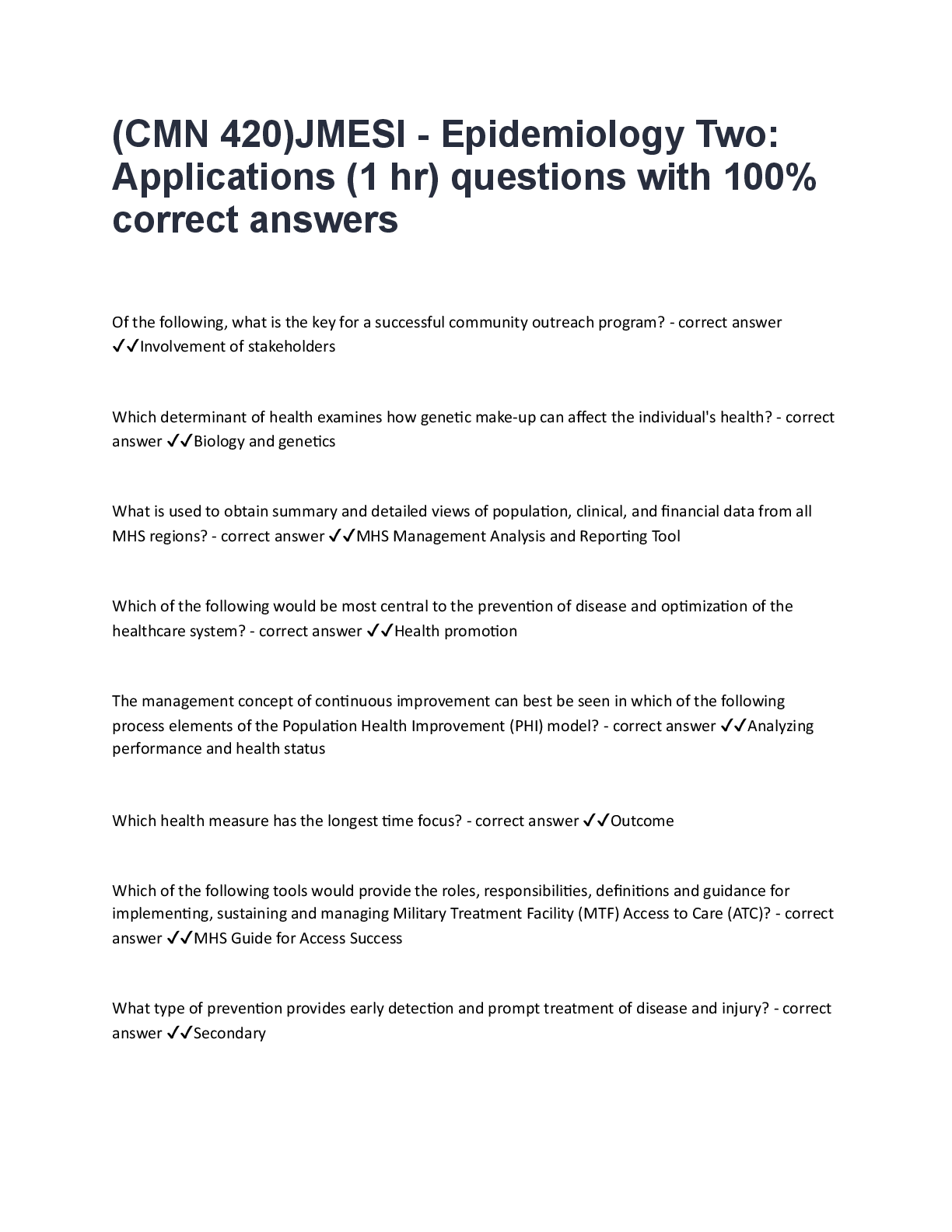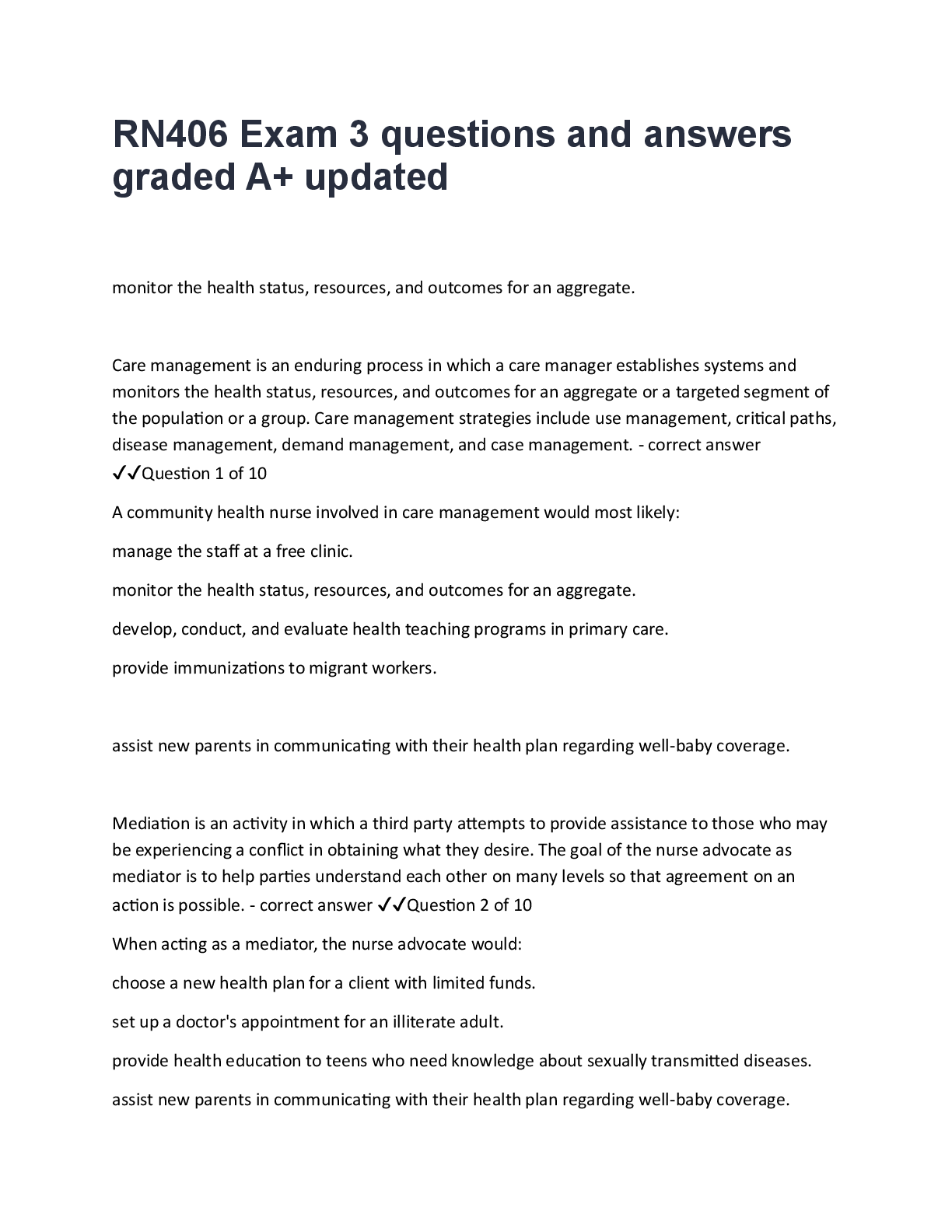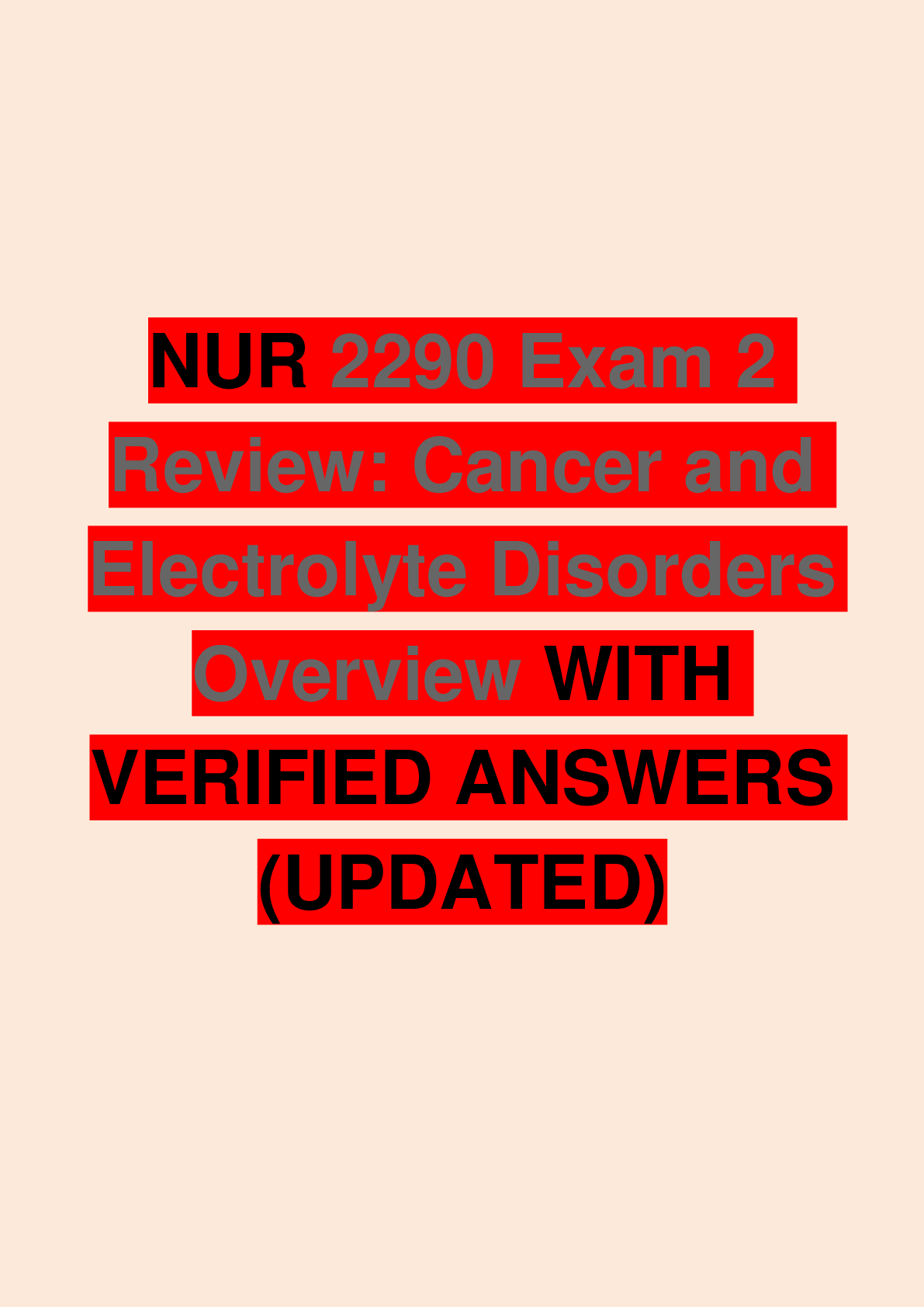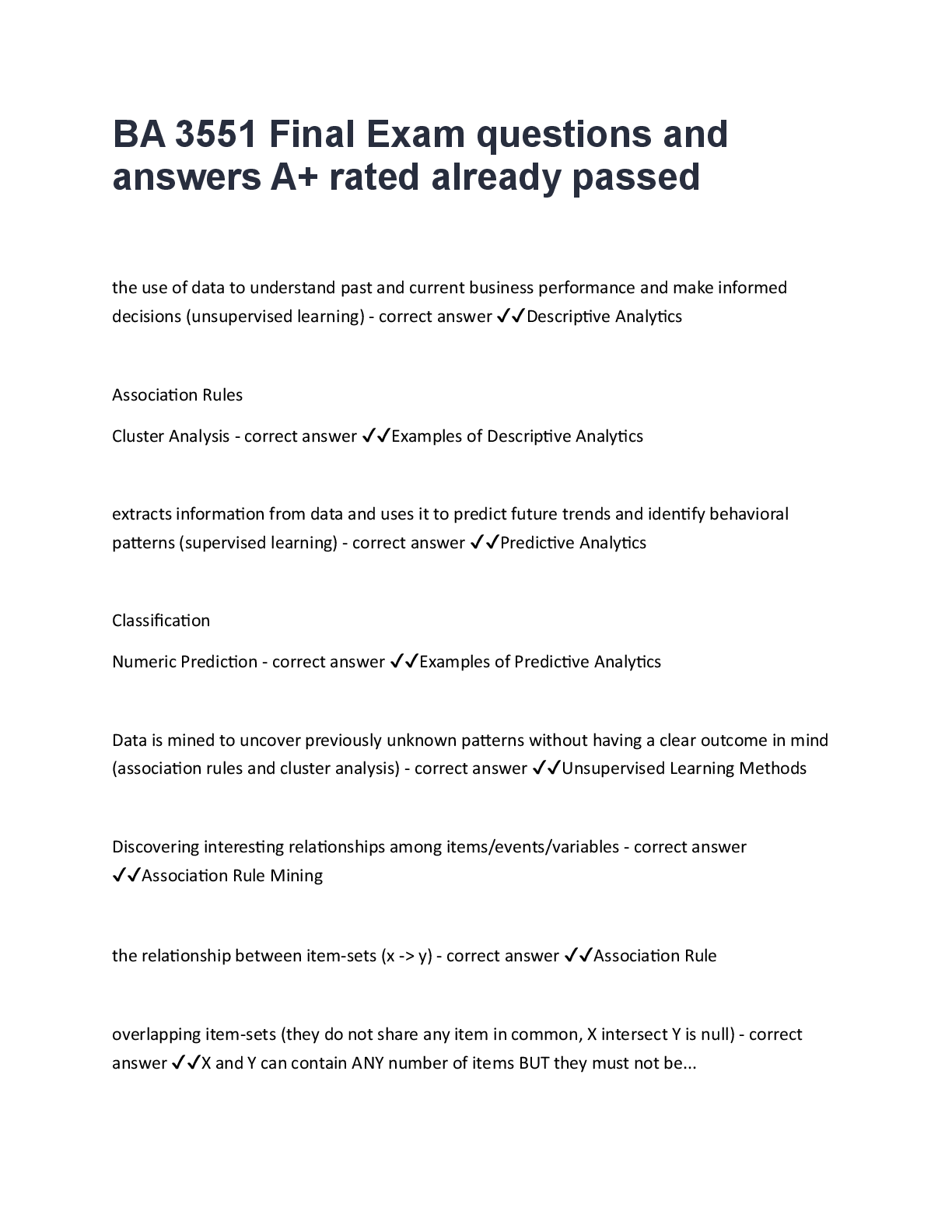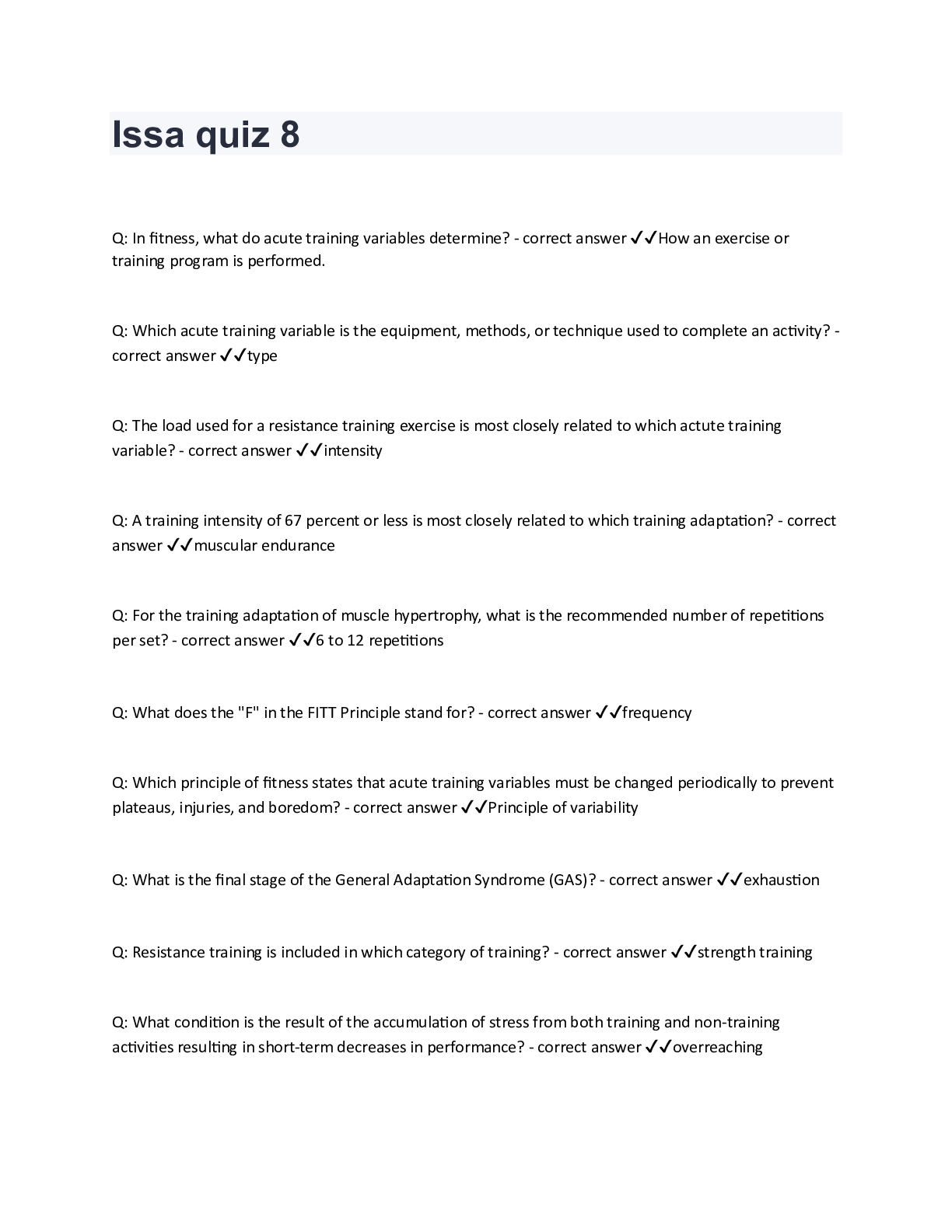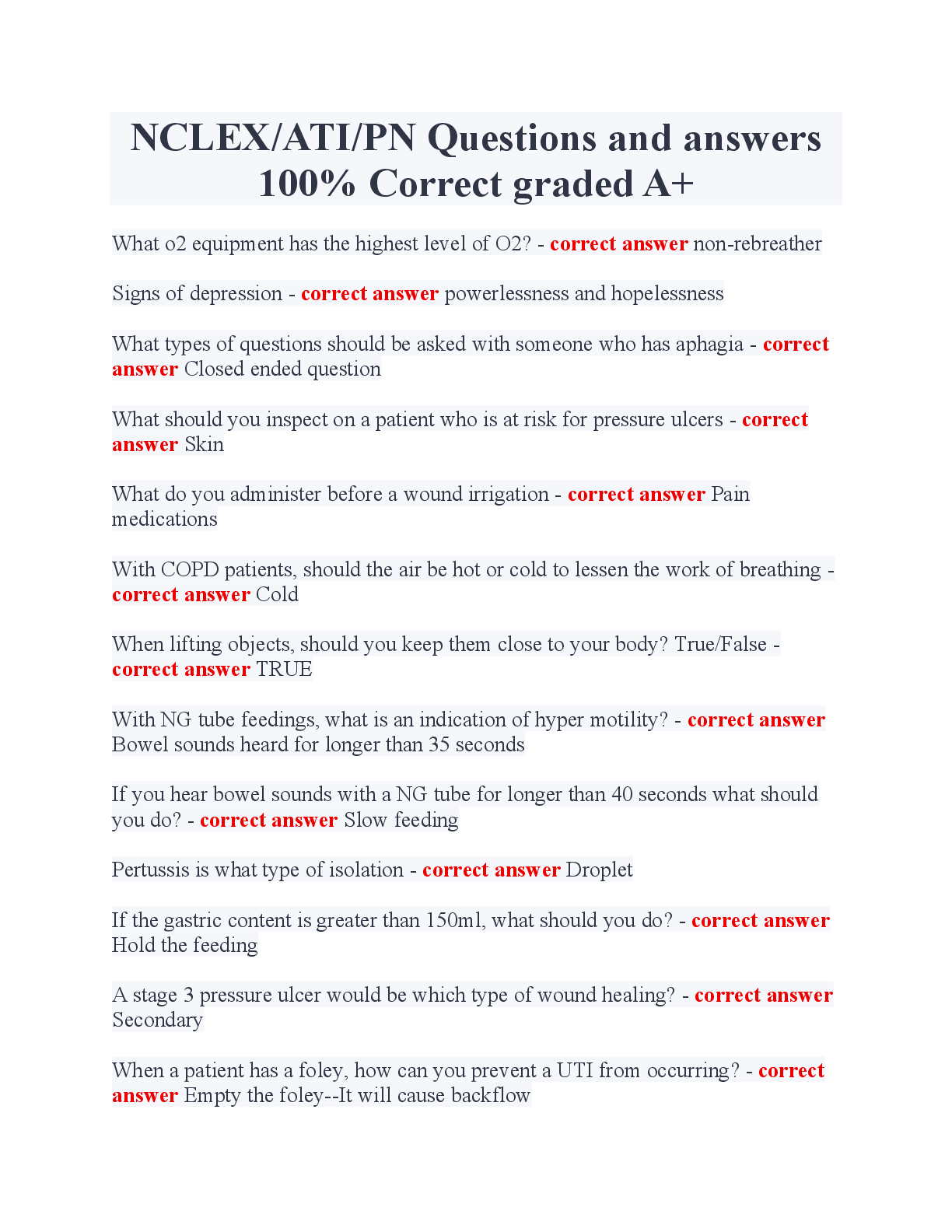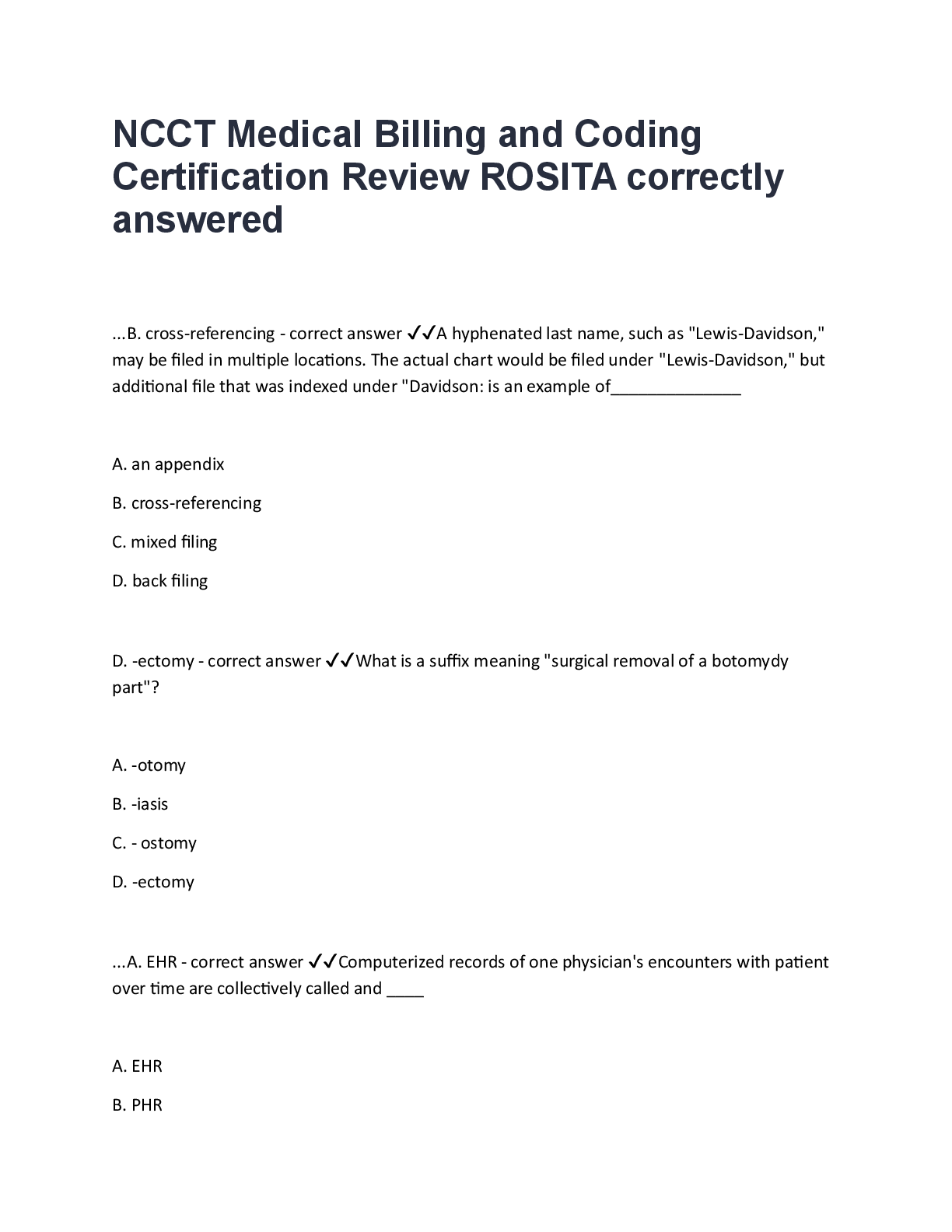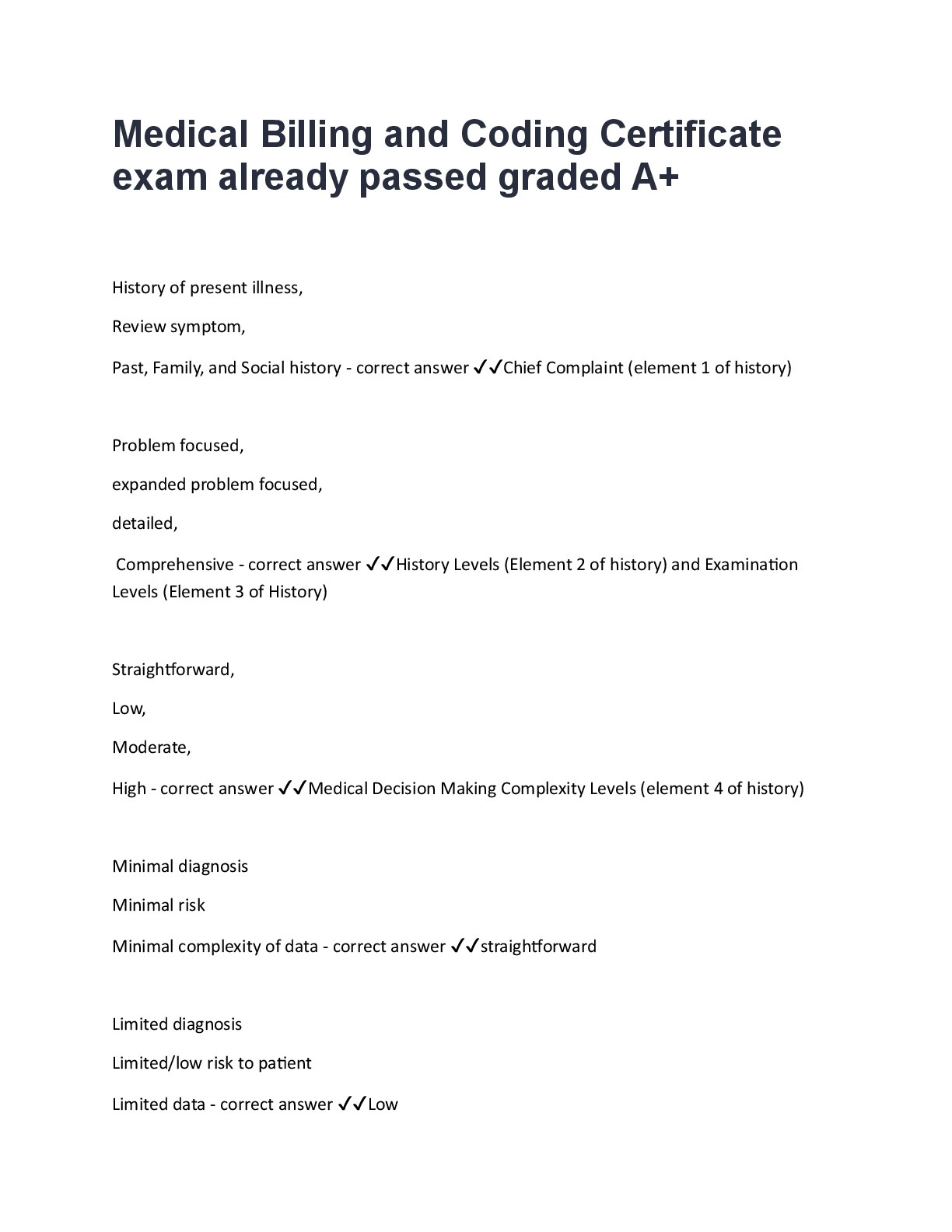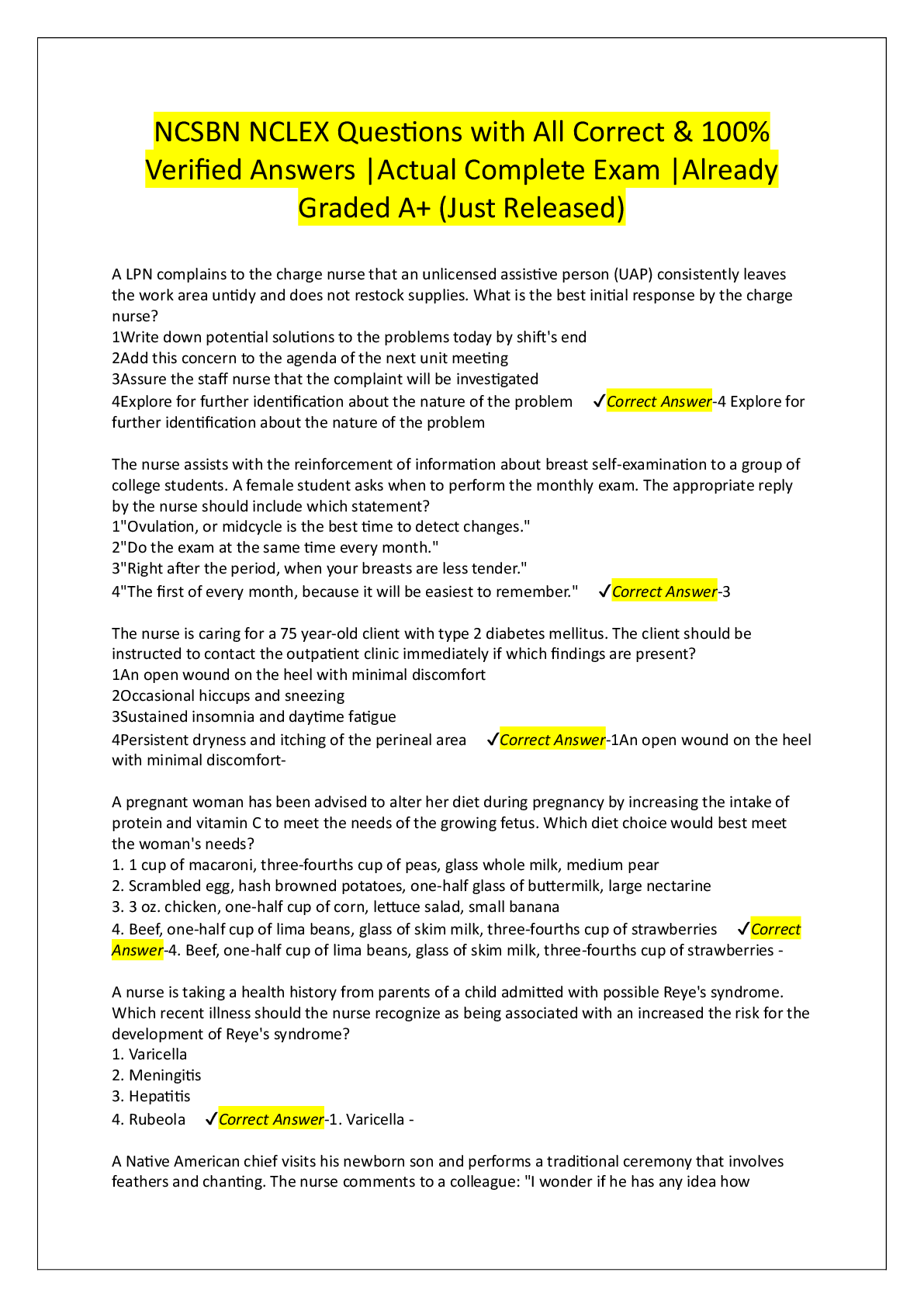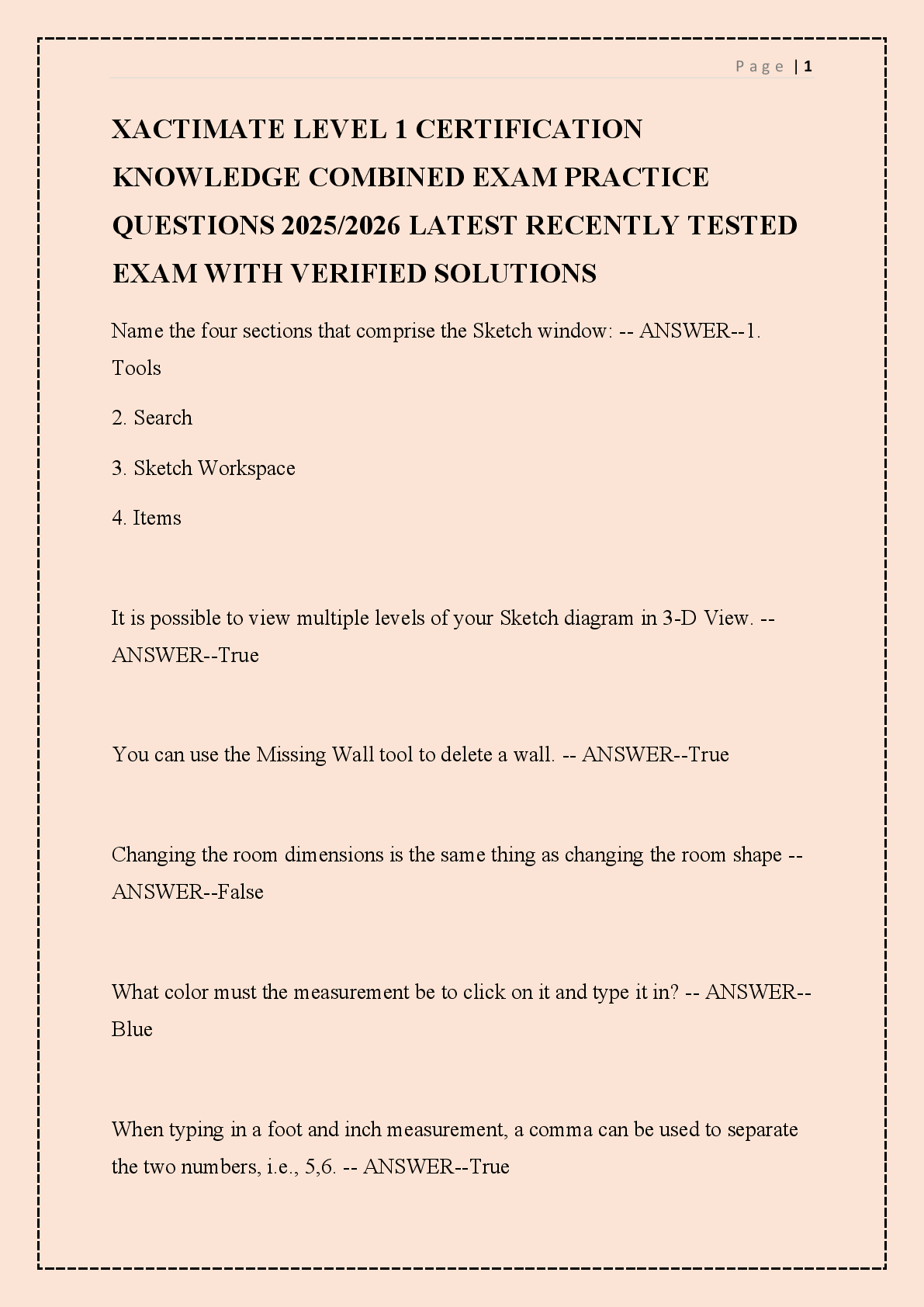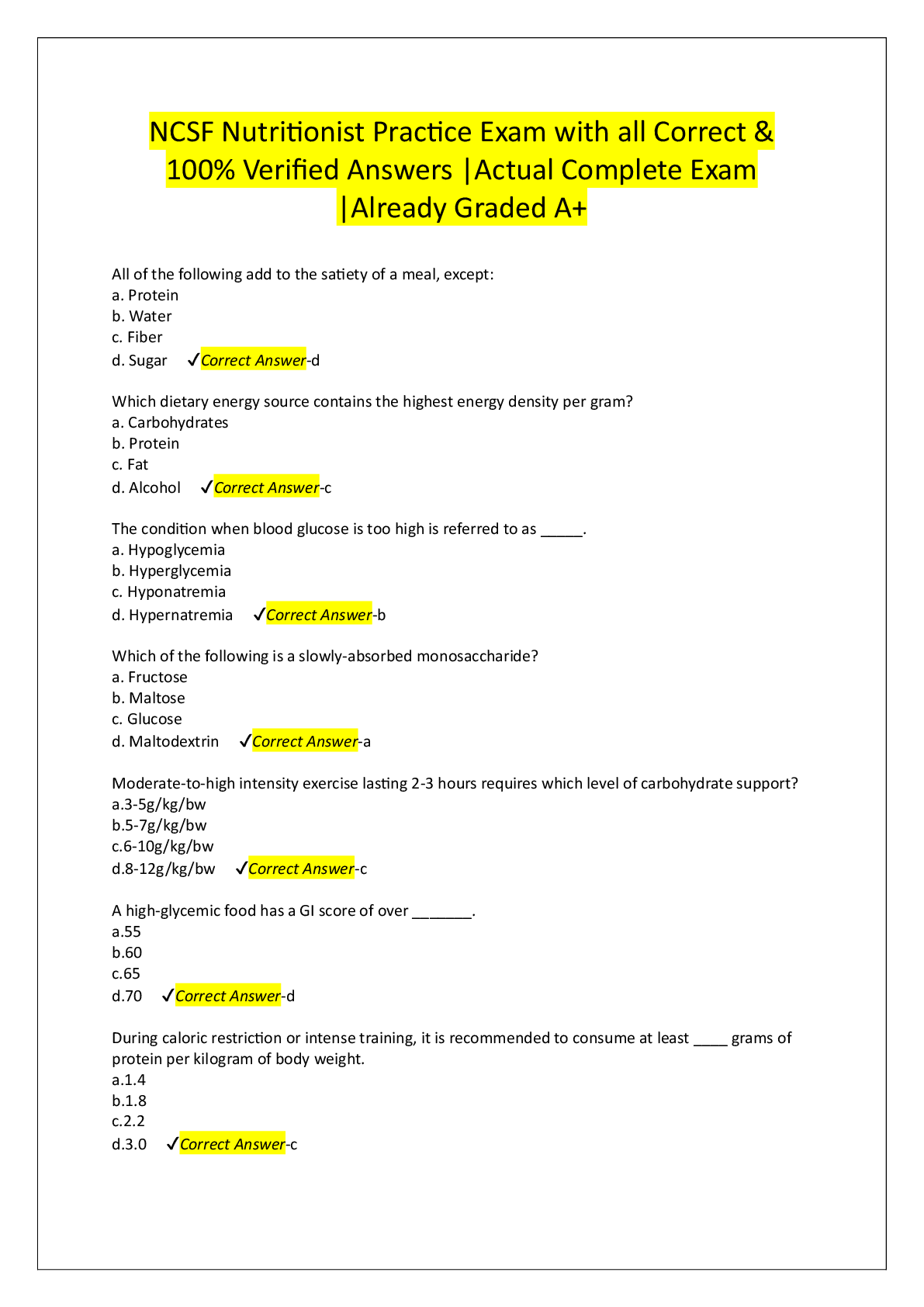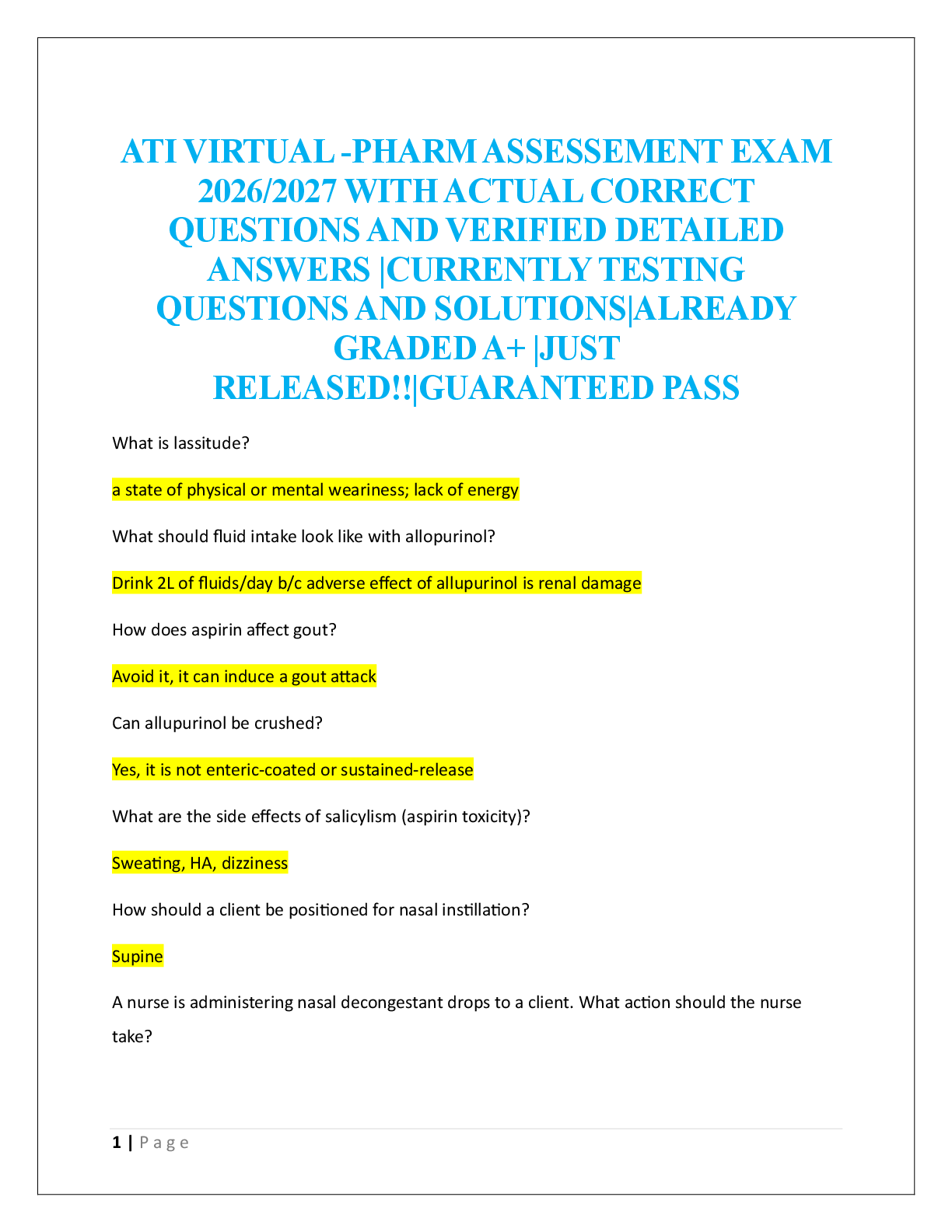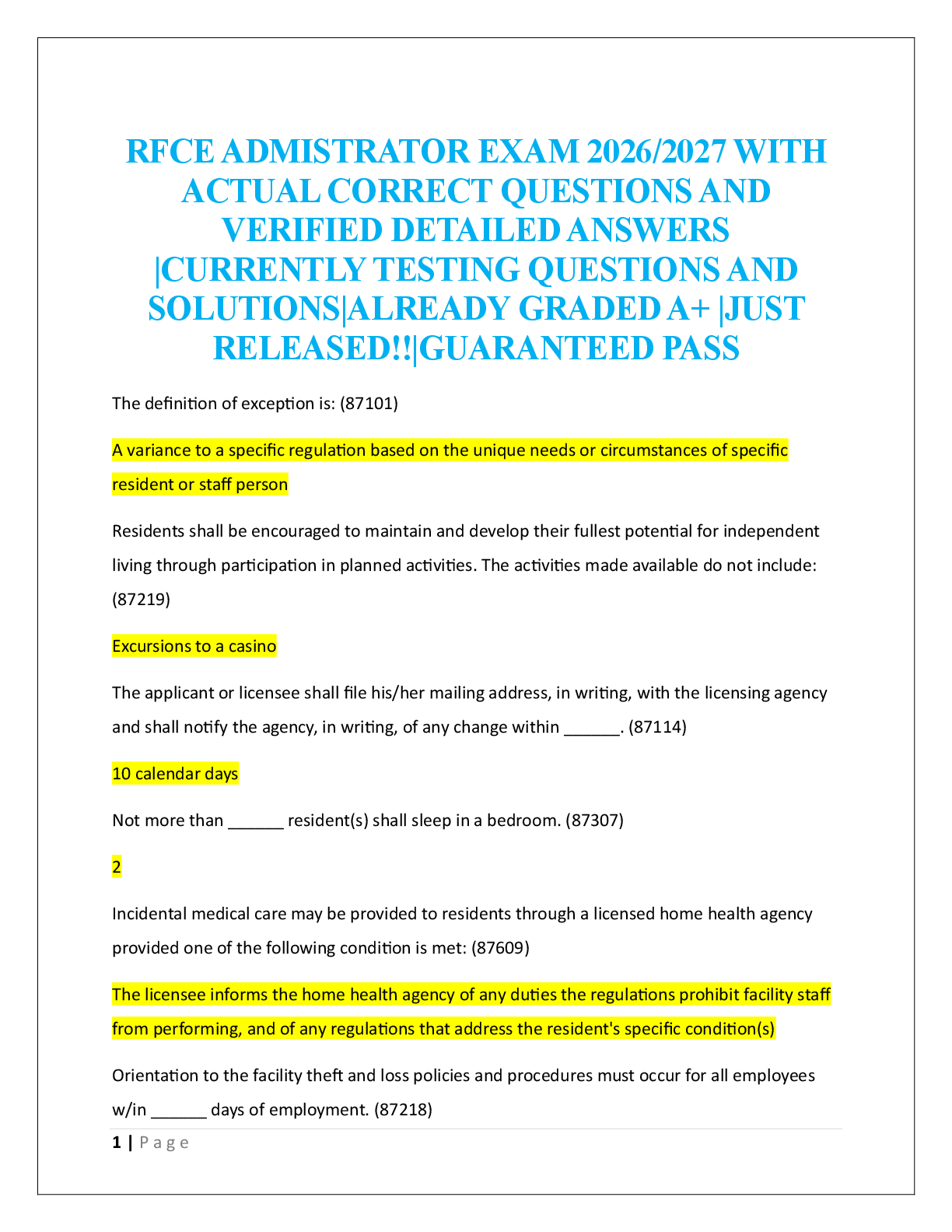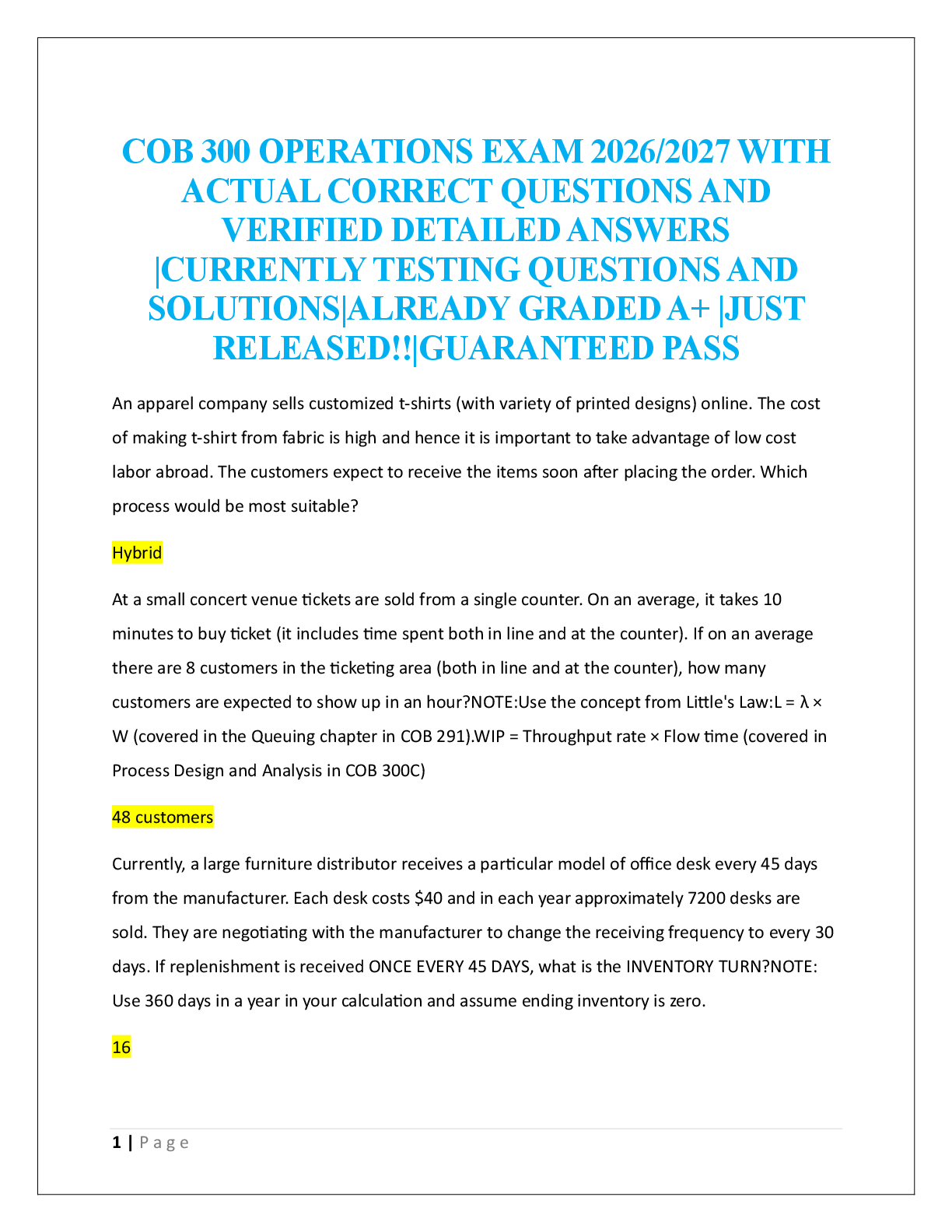AMLS Pretest v 1.11 questions l Fully solved 2023
Document Content and Description Below
A 28 year old female is being evaluated for an acute onset of an alteration in mentation. She complained of a stiff neck and persistent headache. Vital signs are P112, R22 and regular, BP 144/88, SpO2 ... 95% and T 102.3°F (39°C). The healthcare provider should observe for which complication? Seizure A 45 year old patient is found supine on the floor of the Triage area. Healthcare providers note pinpoint pupils, shallow respirations and vomitus in and around the mouth. What course of action should be implemented next? Supplemental oxygen and suction Patients with a history of chronic bronchitis that present with shortness of breath are likely to have which condition? Pulmonary embolism Acute Respiratory Distress Syndrome (ARDS) is characterized by what pathological change? Breakdown of the alveolar-capillary membrane An anxious male complains of a sore throat, fever, chills, dental pain and dyspnea. the patient has a firm, red pronounced swelling in the sublingual anterior throat area and tongue. What diagnosis is most likely? Ludwig's angina Patients on mechanical ventilation may have hypoxemia due to alveolar collapse from mucous plugging. The best treatment for this is: Administer PEEP 7.) Anaphylaxis is most associated with which physiological event? Vasodilation An elderly patient in an assisted living facility presents with a diminished level of consciousness and elevated white blood count. Assessment reveals pale, clammy skin and a urinary catherter with dark colored urine. Vital signs are P132, R 38 and shallow, BP 78/46, SpO2 91% and T 100.8°F (32.8°C). What classification of shock is the patient most likely experiencing? Distributive Healthcare providers are assessing a patient with pronounced jugular vein distention and muffled heart tones. Vitals are P 128, R 26, BP 74/52. What classification of shock should be suspected? Obstructive During compensatory shock, the renin-angiotensin-aldosterone system is activated to cause a/an: Increase in preload, afterload and re-absorption of sodium A 42 year old patient with a history of rheumatoid arthritis is taking glucocorticoids. Over the past two weeks, she complains of chronic fatigue, weakness, and loss of appetite with weight loss. Lab results indicate hyponatremia and hyperkalemia. What underlying diagnosis is suspected? Adrenal insuffiency Which condition should the healthcare provider consider to usually be a non-emergent, non-life threatening illness? Thoracic outlet syndrome Healthcare providers should use extreme caution with nitroglycerin when ST elevation is present in which ECG leads? II, III, aVF Which is a high-risk factor for intracerebral hemorrhage? Cocaine drug abuse 15. )What is the initial treatment for a patient experiencing Hyperosmolar Hyperglycemic Nonketotic Syndrome (HHNS)? Crystalloid IV fluid resuscitation 16.) What condition is most likely to cause respiratory acidosis? narcotic overdose What is the most effective treatment for an unconscious patient in respiratory acidosis? Assisted bag-mask ventilation An autoimmune disease which produces antibodies that mimic the role of TSH and cause an increase in thyroid hormones is: Grave's disease Glucagon may not be effective treatment for a patient with hypoglycemia if they also have which underlying illness? Alcoholism A 24 year old has completed a triathlon on a hot, humid day. The athlete complains of a severe headache, muscle cramps and abdominal pain. As the patient history is obtained, the athlete becomes lethargic. What underlying electrolyte disturbance should the healthcare provider most likely suspect? Hyponatremia What is the sign on the ECG that will indicate a patient is experiencing hyperkalemia? Peaked T waves An 82 year old alcoholic complains of nausea, non-bloody vomiting and severe epigastric and right upper quadrant pain that radiates to the back. Palpation reveals epigastric tenderness without peritoneal signs. What working diagnosis should be considered most likely? Acute pancreatitis A 23 year old male complains of a productive cough, fever, chills and pleuritic chest pain that has worsened over 3 days. A physical exam reveals unilateral wheezing with shallow respirations. Vitals are P 128, R 26, BP 144/88, SpO2 90%, and T 102°F (38.8°C). What treatment should be performed? Supplemental oxygen and immediate transport A patient with suspected gallbladder disease is asked to take a deep breath while the provider presses upward into the upper right quadrant. If the patient ceases inspiration due to increase pain while being examined, this is known as: Muphy's sign The patient is alert and oriented presenting with hypotension, bradycardia, normal capillary refill and warm, dry skin. These are cardinal signs of which type of distributive shock? Neurogenic During what period of the communicable disease process will antibodies begin to reach detectable levels and the infected blood will test positive for exposure to a pathogen? Incubation The patient presents with a history of headache, weight loss, chest discomfort, night sweats and a persistent cough for several weeks. Which infectious disease is most likely occurring? Tuberculosis A lethargic patient presents with dilated pupils and vital signs of P 122, R 26 and BP 130/80. He admits to excessive ingestion of diphenhydramine. What response is the cause for the presenting signs and symptoms? Anticholinergic Organophosphate poisoning will present with which signs and symptoms? Salivation and incontinence of urine and liquid stool What medication classification should be administered to an uncooperative, agitated patient? Benzodizepine A patient presents with mildly decreased mental status, slow respirations, bradycardia, hypotension, has a blood sugar of 42mg/dl (2.3 mmol/L). This is most likely caused from excessive ingestion of: Beta blockers The patient complains of a deep burning discomfort diffusely throughout the epigastrium. This is an example of which type of pain? Visceral A 24 year old female presents with lower right quadrant abdominal pain. Her skin is hot to the touch and she exhibits a Psoa Sign. She complains of nausea and vomiting for 2 days. What diagnosis is suspected? Appendicitis [Show More]
Last updated: 2 years ago
Preview 1 out of 5 pages

Buy this document to get the full access instantly
Instant Download Access after purchase
Buy NowInstant download
We Accept:

Also available in bundle (1)
Click Below to Access Bundle(s)

Package deal for AMLS 2023
AMLS Pretest v 1.11 questions l Fully solved 2023 Medical/AMLS Final review latest 2023 graded A+ to pass AMLS Final questions with complete solution latest 2023 Advanced Medical Life Support...
By Favourfourtune 2 years ago
$54.5
8
Reviews( 0 )
$10.00
Can't find what you want? Try our AI powered Search
Document information
Connected school, study & course
About the document
Uploaded On
Feb 07, 2023
Number of pages
5
Written in
All
Additional information
This document has been written for:
Uploaded
Feb 07, 2023
Downloads
0
Views
98

